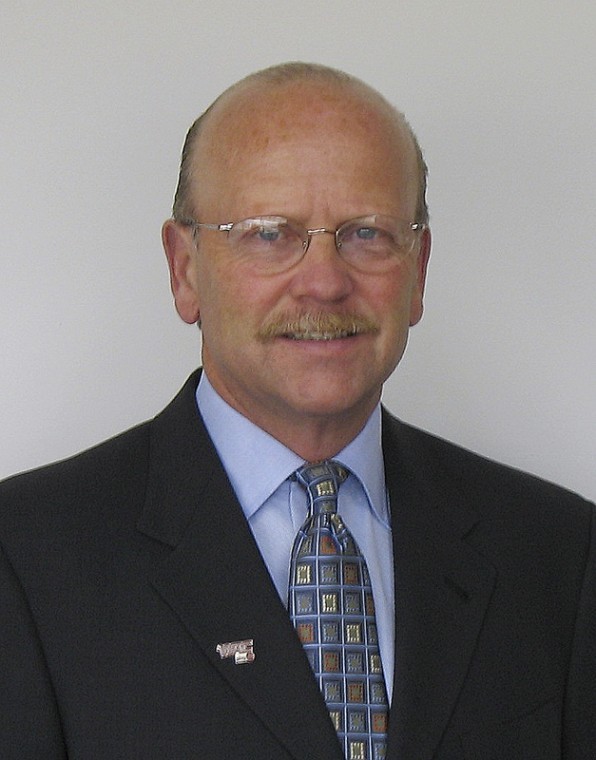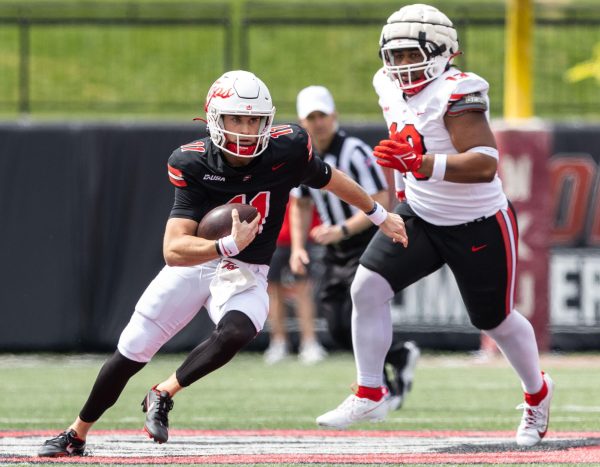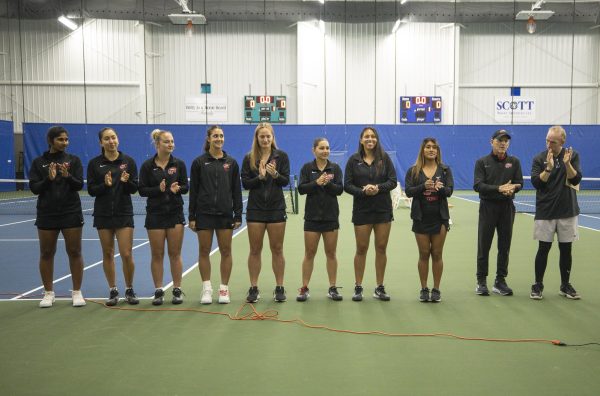Ransdell: Sun Belt in a ‘get better’ mode
February 21, 2012
There are two reasons for a conference to grow its membership, President Gary Ransdell said.
He said leagues can either add teams to improve and create a more national product, or they can add programs to simply ride the waves of conference realignment.
Last week, when the Mountain West Conference and Conference-USA announced their intentions to merge and create what could become a 24-team league, it appeared the Sun Belt Conference could find itself in the second category.
But after Karl Benson, Western Athletic Conference Commissioner, was hired to the same position with the Sun Belt on Thursday, Ransdell said the league won’t be scrambling to stay alive.
“We are absolutely not in a survival mode,” Ransdell said. “We are in a ‘get better’ mode. And that’s precisely the way Karl is going to approach his duties.”
Benson, 60, will take over for the retiring Wright Waters on July 1.
He expressed desires on his introductory teleconference to expand the Sun Belt to at least 12 football-playing schools.
Per current Football Bowl Subdivision rules, FBS leagues must have 12 football-playing members to hold a conference championship game.
The Sun Belt currently has nine schools playing football at the FBS level, with South Alabama slated to join that group in 2013.
Ransdell said he’d like to see the league grow to at least 12 teams but preferably 14.
“In my opinion, there’s no reason why the Sun Belt Conference cannot rise, in a reasonable time, to a level of strength that would be at the top of what we currently know as the non-(automatic qualifying) conferences,” he said.
Benson wouldn’t speculate on specific schools that would be on the Sun Belt’s wish list.
He did, however, say teams that are currently at an FBS level and lie within the league’s current geographical footprint would be given first priority.
Following that formula, Alabama-Birmingham, Southern Mississippi, Louisiana Tech, Rice and Tulane could all be logical targets for Benson.
“All you have to do is look at a map to see the current FBS schools that aren’t members of the Sun Belt that would meet that criteria,” he said on Thursday. “…The message that the Sun Belt wants to make today is the Sun Belt will be, and could be, an attractive landing spot for any current FBS member in the footprint.”
Benson has plenty of experience dealing with conference realignment and has found himself on both ends of that spectrum during his tenure with the WAC, which began in 1994.
He played a part in the league growing to 16 teams in 1996, becoming the largest conference in NCAA Division-I athletics.
But Benson saw half the WAC’s members leave in 1999 to form the Mountain West Conference, which, along with the CUSA, has repeatedly raided the WAC of programs in years since.
With Hawaii, Fresno State and Nevada all scheduled to leave the WAC for the Mountain West, the WAC has been reduced to just five football playing schools.
Athletics Director Ross Bjork said he’s not concerned with the WAC’s membership retention problems following Benson to the Sun Belt.
“I think Karl has actually allowed his league to survive longer than maybe it should have,” Bjork said. “What he’s done to hold things together… I think that’s a benefit to our conference that he knows how it works, both ways.”























